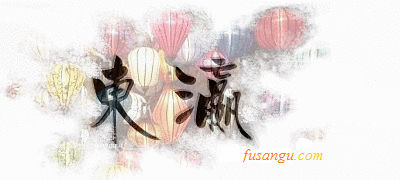Tokyo is served by an excellent mass transit railway network. The subway lines offer a cheap and comfortable way of getting around and you can basically reach any area and sightseeing place by solely relying on this network.
Furthermore, the network is so dense that you can easily spend entire days of sightseeing by only travelling along a single line.
In this page we list major sightseeing itineraries associated to each subway lines.
If you are in Tokyo for few days (2-3) you will most likely choose the subway as means of transport for your sightseeing tours.
Depending on the location of your hotel, you might have to use 2-3 subway lines for every day-tour. Having to use more than 3 lines in general has to be considered indicative of poor organisation.
Especially if you visit the city for the first time, it is best to choose easy to organise tours, that require a low number of transfers. Using subway discount day passes simplifies transfer itineraries, as this spares the nuisance of having to buy a ticket for every ride (which is the case if you switch from lines managed by different operators).
To further simplify the organisation, you can consider itineraries that require travelling only on one line.
Single subway line itineraries
Below we indicated the main sightseeing areas and places of interest served by the 13 subway lines that constitute Tokyo’s mass transit system:
-
Line 1 (Asakusa Line): Oshiage, Asakusa, Nihombashi, Shimbashi, Takanawa, Ota;
-
Line 2 (Hibiya Line): Minami-Senju, Ueno, Akihabara, Chuo, Roppongi, Naka-Meguro;
-
Line 3 (Ginza Line): Asakusa, Ueno, Ginza, Akasaka, Shibuya;
-
Line 4 (Marunouchi Line): Ikebukuro, Bunkyo, Chiyoda, Chuo, Akasaka, Yotsuya, Shinjuku;
-
Line 5 (Tozai Line): Funabashi, Edogawa, Nihombashi, Chiyoda, Iidabashi, Kagurazaka, Takadanobaba, Nakano;
-
Line 6 (Mita Line): Sugamo, Bunkyo, Chiyoda, Takanawa, Meguro;
-
Line 7 (Namboku Line): Komagome, Bunkyo, Iidabashi, Akasaka, Meguro;
-
Line 8 (Yurakucho Line): Ikebukuro, Iidabashi, Minato, Yurakucho, Ginza, Toyosu;
-
Line 9 (Chiyoda Line): Kita-Senju, Nippori, Yushima, Chiyoda, Harajuku, Yoyogi;
-
Line 10 (Shinjuku Line): Shinjuku, Bunkyo, Akihabara, Morishita, Ichikawa;
-
Line 11 (Hanzomon Line): Oshiage, Ryogoku, Chiyoda, Shibuya;
-
Line 12 (Oedo Line): Shinjuku, Bunkyo, Taito, Sumida, Koto, Chuo, Minato;
-
Line 13 (Fukutoshin Line): Ikebukuro, Shinjuku, Shibuya.
Some lines are particularly useful as an entire journey could be organised by relying almost exclusively on 2 or 3. These are the following:
-
Ginza and Fukutoshin Line, which connect all the areas normally visited on a Tokyo 3-day itinerary (i.e. Asakusa, Ueno, Shibuya, Shinjuku);
-
Chiyoda Line, which connects the northern districts of Adachi and Arakawa, ideal places where to find a cheap accommodation solution for long stays, and the centre. You could easily spend 4-5 days exploring only locations along this line or in its immediate vicinity;
- Oedo Line, which runs along a semicircular route connecting most of Tokyo's most interesting neighbourhoods.
Descriptions of well-balanced itineraries along Tokyo's subway lines in the following pages:
-
Asakusa Line | Hibiya Line | Ginza Line | Marunouchi Line | Tozai Line | Mita Line | Namboku Line | Yurakucho Line | Chiyoda Line | Shinjuku Line | Hanzomon Line | Oedo Line | Fukutoshin Line

